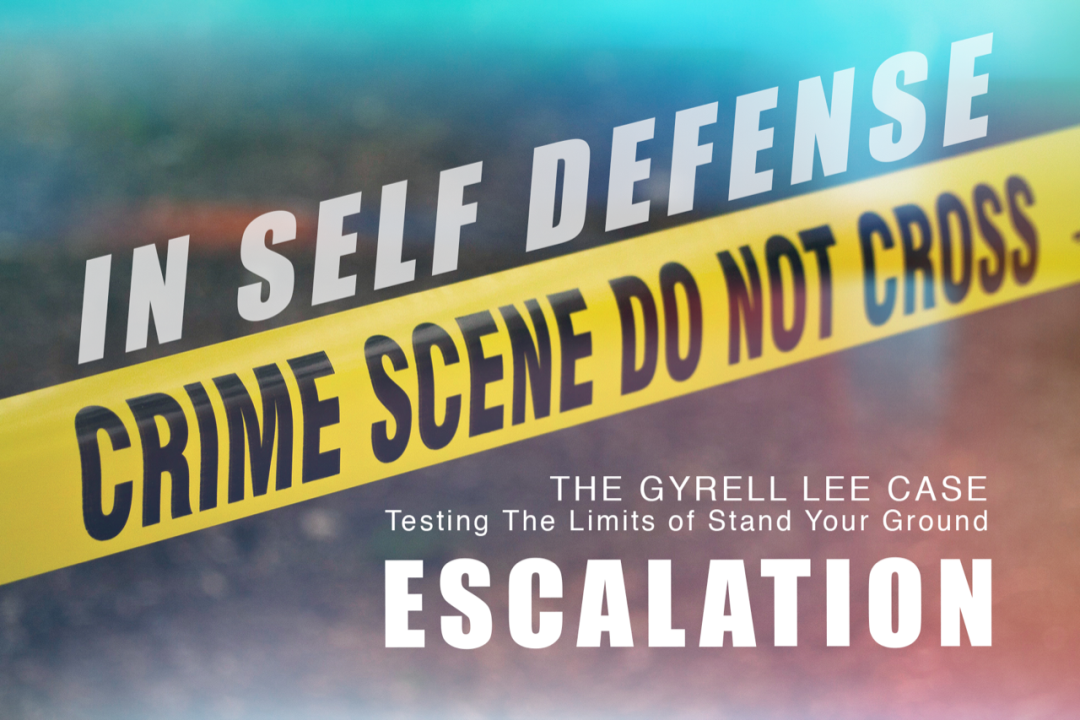
Posted on January 18, 2019
“In Self Defense” The Gyrell Lee Case: Testing The Limits of Stand Your Ground- Escalation
The Gyrell Lee Case
Testing the Limits of “Stand-Your-Ground”
Part 3: Escalation
In this installment of “The Four Elements of Self-Defense,” we explore how the concept of “escalation” factored into the legal defense of the Gyrell Lee case. Like most of the shooters we analyze, Gyrell Lee was NOT a CCW Safe member. We’ve chosen his case because it provides clear lessons for concealed carriers regarding what can go wrong in a self-defense shooting.
Shortly after midnight, during the earliest hours of New Year’s Day, 2013, Gyrell Lee watched as Quinton Epps shot Jamieal Walker twice in the stomach, continuing to fire as Walker ran for his life. Walker was Lee’s cousin and best friend. Epps, according to local reporting, was a known trouble maker, and he had come by Walker’s house several times throughout the evening, arguing with Walker. Each time, Epps was more intoxicated and verbally abusive than the last.
Lee, a licensed concealed carrier, had retrieved a .45 caliber pistol from his car after a particularly heated exchange. He got his gun “out of instinct” he told investigators. “Just in case.”
Walker threw the first punch in the fight that ended with his shooting death. The two struggled briefly. Lee testified that he saw Epps holding a gun behind his back, and he wanted to shoot Epps to end what he perceived as a mortal threat to his cousin, but as he later declared in a recorded jailhouse call, he was “waiting for a clear shot.”
After Epps shot Walker, according to Lee, Epps turned his gun on him. Lee fired first, striking Epps with eight bullets, mortally wounding him. Lee fled the scene and hid his gun under a trash can. Police picked him up about 12 hours later as part of their investigation into what they understood to be a gunfight that ended with a double homicide. Ultimately, Lee would be charged with first-degree murder for the shooting death of Quinton Epps. In July of 2015, a jury would hand down a second-degree conviction.
In 2018, the North Carolina Supreme Court tossed the conviction because of an error made by the trial court, and currently Lee is waiting for a second chance to get his case before a jury.
Clearly, Quinton Epps started the trouble that eventually escalated into the shootout that cost him his life, but Walker is the one who instigated violence by throwing the first punch, and Lee set the stage for the whole tragic scenario when he chose to arm himself for a possible fight.
In those minutes before the final confrontation, Lee and his cousin had a number of options available to them. They could have moved their New Year’s Eve party inside. They could have taken the party to someone else’s house. They could have called the cops. Instead, they chose to stay outside and wait for the next inevitable encounter with Quinton Epps. Lee was concerned enough about the next meeting that his instincts drove him to arm himself “just in case.”
Of course, Lee and Walker had every right to be outside of Walker’s home. They were under no obligation to abandon their celebration and retreat inside, or to go somewhere else — but considering that Walker is now dead, and Lee is in jail, was it worth standing up for that right with deadly force?
When Epps returned for the final, fatal encounter, he parked his car about three houses down, and according to the North Carolina Supreme Court’s accounting of events, “Defendant and Walker walked down the street to talk to Epps.” They left the relative safety of Walker’s home to confront Epps on the street — an escalation.
The North Carolina Supreme Court’s ruling also notes “Defendant saw that Epps had a gun behind his back” as the verbal argument escalated. Lee knew Epps was armed, yet he stood by as the argument got more heated. Finally, Walker threw the first punch, which triggered the fatal gunfight.
The lesson for the concealed carrier is that if you have time to arm yourself in anticipation of a violent encounter, you almost certainly have time to consider other options that are less likely to end in homicide. Once you introduce a firearm into a conflict, the chance that the firearm will be used to end the conflict goes way up. It really doesn’t matter if you have a right stay and defend yourself, the real question is whether or not the potential life-or-death consequences are worth it.
Don West, veteran criminal defense attorney and National Trial Counsel for CCW Safe, says the protracted legal battle in Lee’s case demonstrates the very thin line between self-defense and murder. “No matter how justified you might be in using lethal force,” West says, “if there is an opportunity to avoid it, take it.”
In our series “The Four Elements of Self-Defense,” we explore how location, escalation, reasonable fear, and post-incident actions can affect the legal defense in self-defense shooting. In the next installment, we’ll look specifically at how the concept of “reasonable fear” factored into Lee’s legal defense.
 |
SHAWN VINCENT- LITIGATION CONSULTANTShawn Vincent is a litigation consultant who helps select juries in self-defense cases, and he manages public interest of high-profile legal matters. If you have any questions for Shawn, or would like more articles like this, let us know belo |